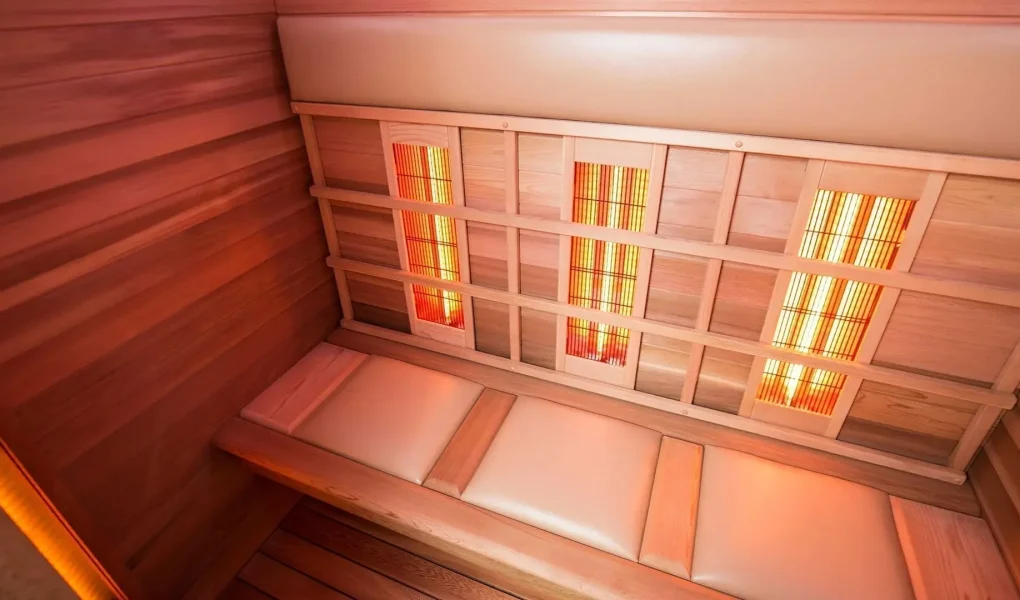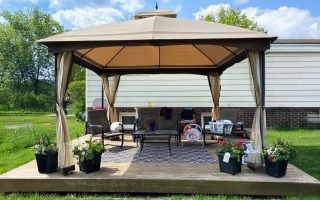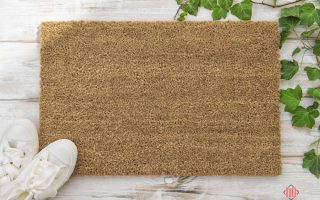Saunas aren’t just a luxury at the gym or spa anymore—they’re becoming one of the most desirable home upgrades. Adding a sauna is more than about wellness; it’s about boosting your home’s value. Real estate trends show that buyers increasingly prioritize wellness-focused amenities, and a properly installed sauna can enhance both appeal and ROI when it comes time to sell.
But here’s the catch: not all saunas are created equal. The installation requirements for a traditional steam sauna are completely different from those of an infrared unit. Treating them as the same is the biggest planning mistake homeowners and contractors make.
Understanding how these two types differ—right from technology to construction needs—is the first step in ensuring your sauna project is safe, efficient, and truly adds value.
The Great Sauna Showdown: Planning Differences
Traditional Saunas (Wet/Steam)
Traditional saunas rely on heated stones, either electric or wood-burning, to raise the room’s temperature. By pouring water over the stones, you get steam and humidity, creating that classic sauna environment many people picture.
Key Construction Needs:
- Insulation: High R-value insulation is crucial to hold in the extreme heat.
- Drainage: A moisture-resistant vapor barrier and proper drainage are non-negotiable to handle humidity.
- Venting: Specialized high-heat venting is needed to manage air circulation.
- Electrical Load: Expect a significant draw—most setups need a 240V dedicated circuit.
Traditional setups give you that authentic steam experience, but they also demand heavy-duty planning, especially in terms of moisture control and electrical requirements.
Infrared Saunas (Dry Heat)
Infrared saunas work differently from their traditional counterparts. Instead of heating the air around you, they use carbon or ceramic heaters that emit infrared light, directly warming your body. Because they operate at lower temperatures (typically 120°F–150°F), the experience feels gentler, yet still delivers the detox and relaxation benefits many people seek.
Key Construction Needs:
- Installation Simplicity: Most infrared saunas arrive as pre-fabricated kits, making setup much easier.
- Electrical Requirements: Unlike traditional models, they typically run on a standard 120V outlet—no need for heavy rewiring.
- No Venting or Drainage: Since there’s no steam, you won’t need specialized venting systems or floor drains.
For homeowners who want a convenient and cost-effective option, infrared saunas are often the go-to. They’re easier to install, require less ongoing maintenance, and fit seamlessly into smaller spaces without the heavy infrastructure of a traditional sauna.
Critical Home Improvement Considerations
Once you’ve chosen between a traditional or infrared sauna, the next big step is deciding where and how to integrate it into your home. This stage is often overlooked, but it’s what makes the difference between a seamless upgrade and a constant maintenance headache.
Location Planning
- Basement or Garage: These spaces often provide easier access to electrical connections, but temperature stability can be tricky. Traditional saunas in particular may need extra insulation to compensate for colder surroundings.
- Bathroom or Spa Room: Popular choices for convenience, but if you’re adding a traditional sauna here, you’ll need to invest in serious moisture-proofing to protect walls, ceilings, and fixtures.
Electrical Setup
- Infrared Saunas: Usually as simple as verifying your outlet and amperage—most standard home outlets work fine.
- Traditional Saunas: A different ballgame. You may need a dedicated 240V circuit or even a sub-panel, which can be a significant expense. Always plan this step with a licensed electrician.
Ventilation
Good airflow is essential for both sauna types, though the reasons differ. Traditional saunas need proper intake and exhaust for steam and fresh air. Infrared models don’t create steam, but still benefit from basic ventilation to avoid stuffiness and ensure comfort.
Sourcing Quality Materials and Kits
When it comes to building or installing a sauna, the materials you choose are just as important as the type of sauna itself. Cutting corners here can compromise both safety and long-term value.
Why Quality Matters
The heating elements and cabin materials face constant exposure to heat and (for traditional saunas) moisture. Using low-grade woods like untreated pine can warp, crack, or even release harmful resins when exposed to high temperatures. That’s why sauna specialists recommend cedar or hemlock, both prized for their heat and moisture resistance as well as their pleasant aroma.
Kit vs. Custom Build
- Pre-Fab Infrared Kits: Perfect for smaller spaces and DIY-friendly projects. They’re quick to assemble and come with standardized safety testing.
- Custom Traditional Builds: If you’re planning a larger steam sauna, a custom approach is often better. This allows for tailored insulation, drainage, and ventilation, but it also requires professional installation to meet building codes.
Whether you’re installing a compact, energy-efficient infrared model or creating a full-scale steam room, the quality of the heaters, wood, and electrical components makes or breaks the project. For those moving from the planning stage to the buying stage, finding a trusted supplier is essential. Reputable barrel sauna manufacturers offer both infrared and traditional kits, giving you the flexibility to compare specifications and choose the best fit for your home.
Post-Installation Value and Maintenance
Once your sauna is up and running, the benefits extend far beyond relaxation. A well-installed sauna can increase your home’s appraisal value, especially if appraisers see that it meets safety standards, uses durable materials, and integrates seamlessly into the property. Buyers are drawn to turnkey wellness features, and a sauna that’s built to last sends a strong signal of quality.
Maintenance Differences
- Infrared Saunas: These are generally low-maintenance. You’ll just need to wipe surfaces down after use and occasionally check the heaters.
- Traditional Saunas: Require a bit more care. Regular cleaning, treating the wood, and ensuring the drainage system stays clear are essential. With the right upkeep, though, they can last decades and maintain that authentic spa-like feel.
The bottom line: both sauna types deliver excellent value, but long-term satisfaction comes down to maintaining them properly. Think of it as protecting your investment—just like any other major home addition.
Conclusion
Adding a sauna is one of those rare home projects that pays off in both wellness and property value. But success depends on smart planning—starting with whether you go traditional or infrared. Each has distinct requirements: traditional saunas need heavy-duty insulation, drainage, and electrical setups, while infrared models offer a more straightforward, kit-based approach.
The lesson here? Type decides the build. Once you know which sauna best fits your space, lifestyle, and budget, you can plan properly, choose the right materials, and avoid costly mistakes.
Before starting, consult a certified electrician and partner with a reputable sauna supplier to ensure every component meets safety and quality standards. Done right, your sauna won’t just be a luxury—it will be a lasting upgrade that enhances your home’s comfort, style, and value.




